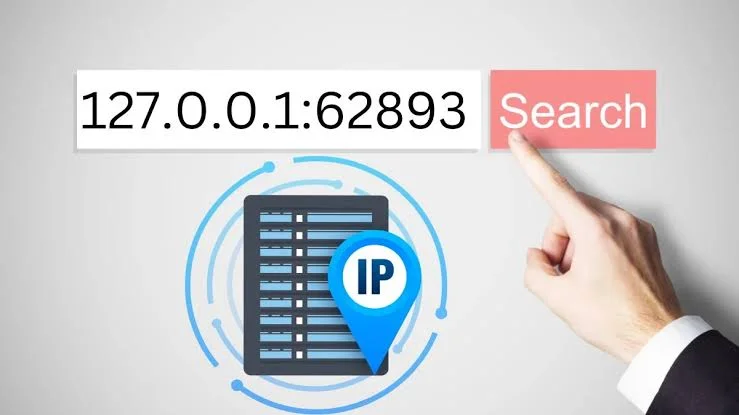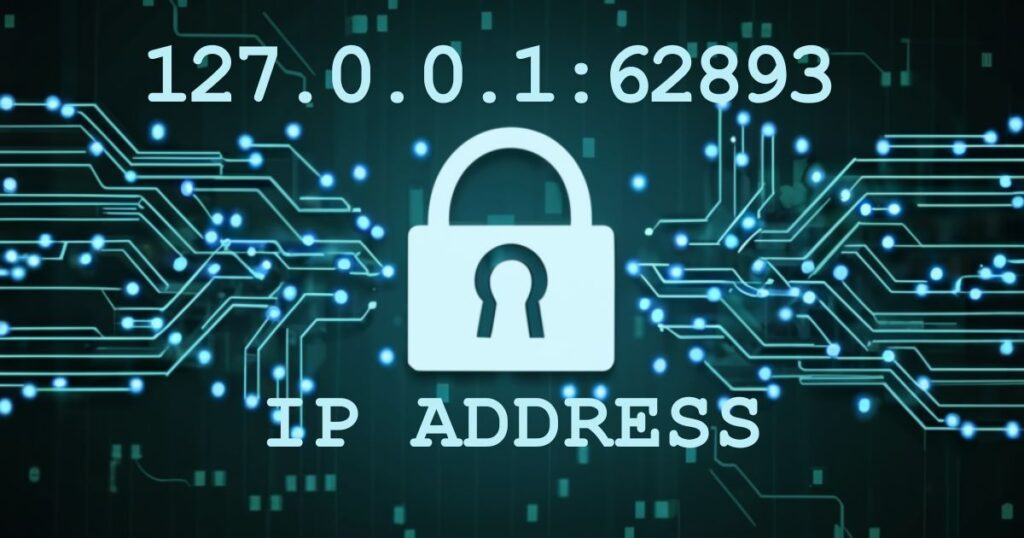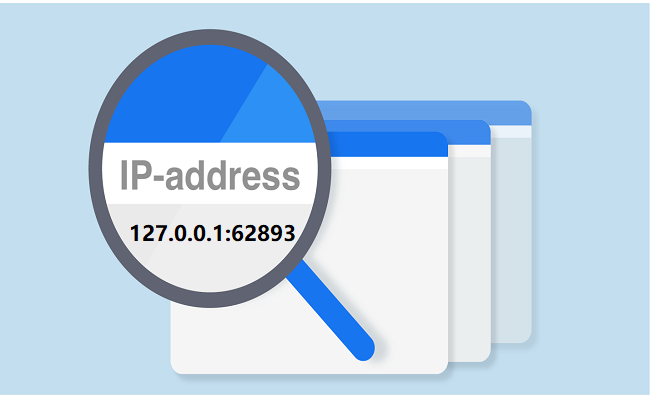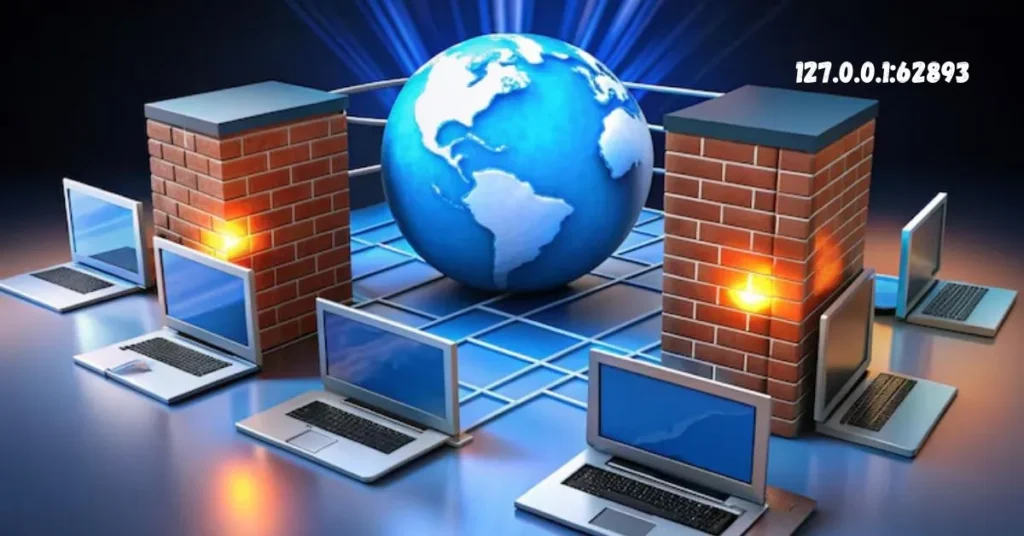127.0.0.1:62893: In today’s digital world, IP addresses are the unsung heroes of our online experience. They act as unique identifiers for devices on a network, allowing them to communicate and share information seamlessly. Among these myriad numbers, 127.0.0.1 stands out—especially when paired with an unusual port number like 62893.
But what does this combination mean? Why should you care about it? Whether you’re a curious tech enthusiast or someone navigating through network configurations, understanding 127.0.0.1:62893 can unlock new insights into how your devices interact and troubleshoot issues effectively.
Table of Contents
Understanding the IP Address 127.0.0.1:62893
The IP address 127.0.0.1 is known as “localhost.” Imagine it as your computer’s way of talking to itself. You’re pointing back to your computer when you use this IP address. Think of it like writing a letter to yourself and then reading it.
This unique IP address is called a loopback address. It’s used in software development and networking to test applications without sending information to the broader Internet. So, when you see 127.0.0.1, it’s like your computer is saying, “Hey, I’m talking to me!”

What is127.0.0.1:62893?
Let’s start by unraveling the cryptic IP address 127.0.0.1:62893. This string holds significance in networking as it refers to the loopback address and a specific port number.
The IP address 127.0.0.1 is commonly used to test network connections on a local machine. It allows a computer to communicate with itself.
When you encounter this unique combination followed by a port number like 62893, it often indicates a particular service or application running on your device utilizing that specific Port for communication purposes.
Why 127.0.0.1:62893 Is Important
Understanding what’s happening behind the scenes with IP addresses and port numbers can be crucial for several reasons:
- Security: Monitoring which ports are open and what IP addresses are being accessed can help ensure your computer or server is secure. If not adequately managed, open ports, like 62893, could be exploited by malicious actors.
- Performance: Troubleshooting performance issues often involves examining local connections (127.0.0.1) and ensuring the correct ports are used. Incorrect port configurations can lead to slowdowns or communication errors.
- Efficient Debugging: Developers often rely on local IPs and ports to test applications. If something’s not working as expected, being able to diagnose issues using addresses like 127.0.0.1:62893 can save time and headaches.
How to Use 127.0.0.1:62893 in Practice
Let’s say you’re developing a web application and using localhost to test it. Your application might be accessible via 127.0.0.1:62893. Here’s how you might go about using it:
- Start Your Service: Ensure your application is running. It might be a web server, a database service, or any other software communicating over the network.
- Access the Service: Open your web browser and type http://127.0.0.1:62893 into the address bar. This directs your browser to connect to the service on port 62893 of your local host.
- Troubleshoot Issues: If the service doesn’t load, check to see if it’s running.

Understanding the Applications of 127.0.0.1:62893
Computers use loopback addresses like 127.0.0.1 to communicate with themselves, which is helpful for testing and development. Port number 62893 is a specific gateway for applications or services on your machine.
For instance, developers often use 127.0.0.1:62893 to test their software locally before making it live. This address allows programs to interact securely and efficiently without external interference. By using it, you can ensure everything works smoothly in a controlled environment.
Local Development Environments
One primary use of 127.0.0.1:62893 is in local development environments. Developers often utilize this address to test web applications, APIs, and other network-dependent software without exposing them to the broader Internet.
By running services on localhost and accessing them via the loopback address, developers can iterate quickly and troubleshoot issues in isolation. This setup ensures that testing is done safely and efficiently, making the development process smoother and more secure.
Debugging Networked Applications
When debugging networked applications, having the ability to simulate network traffic locally can be invaluable. By leveraging 127.0.0.1:62893, developers can intercept and analyze data sent and received by their applications without the complexities of external networks.
This facilitates more efficient troubleshooting and quickly resolves bugs and performance issues.
Containerized Development Environments
In the era of containerization and microservices, 127.0.0.1:62893 plays a vital role in orchestrating complex development environments.
Containerized applications often rely on networked services running within the same environment, and the loopback address provides convenient communication between these services. By mapping container ports to local ports, developers can create self-contained environments for testing and development.
Understanding Port Numbers 127.0.0.1:62893
Imagine you have a house, and each room has a specific purpose. In the world of networks, the IP address 127.0.0.1 is like your house, and the port number 62893 is like the door to a particular room. The IP address 127.0.0.1 always refers to your computer, often called “localhost.”
The port number helps direct data to your computer’s right program or service. So, 127.0.0.1:62893 is like saying, “Send this information to my computer, and use this specific door to find the right program.”

Advantages and disadvantages of using 127.0.0.1:62893
Using 127.0.0.1:62893 has distinct advantages. First, it allows for safe testing in a controlled environment. Developers can run applications without exposing them to outside threats, enhancing security during development.
Additionally, accessing localhost is incredibly fast as it bypasses network latency. It enables immediate feedback when troubleshooting or debugging applications. However, there are disadvantages, too. One major drawback is that not all features may work as intended on localhost compared to a live server environment.
Some network protocols behave differently when isolated from external connections. Another consideration is the potential for misconfigurations leading to issues that only appear once deployed externally.
How Does 127.0.0.1:62893 Work?
The IP address 127.0.0.1 is the loopback address, a special designation for your computer. Any data sent to this address doesn’t leave your machine; it loops back internally. When you add the port number, like 62893, you specify that you’re a particular service or application running on that machine.
Ports help manage multiple services at once by directing traffic appropriately. For example, accessing http://127.0.0.1:62893 in your browser connects you directly to a local web server. This setup allows developers to test applications safely before deploying them online.
Common Causes of the Error
Several common causes of the error associated with 127.0.0.1:62893 could be involved. One frequent culprit is network configuration issues that hinder proper communication between devices on the local or Internet networks. Misconfigured firewall settings can block necessary connections, leading to this error message.
Another potential cause could be software conflicts or outdated applications that cannot correctly handle the specific port number used by 127.0.0.1:62893. Additionally, any hardware malfunctions or driver issues within your system could disrupt the smooth functioning of networking protocols and result in encountering this error.
Insufficient permissions for specific processes or services to access the IP address may also trigger errors. When troubleshooting and resolving this issue effectively, it’s essential to investigate these various possibilities thoroughly.
How to Fix the Error
If you encounter the error message related to 127.0.0.1:62893, don’t panic! Try restarting your device or application where the error occurred. Sometimes, a simple reboot can do wonders for clearing out temporary glitches.
Next, check for any updates for the software or system showing the error. Installing the latest updates often includes bug fixes that could address your issue. If updating doesn’t work, consider checking your network settings and firewall configurations.
Ensure that no restrictions are causing communication problems with the specified IP address. If these steps don’t fix the problem, contact online forums or technical support for further assistance.

How to Troubleshoot Issues with 127.0.0.1:62893
If you’re encountering problems or errors involving 127.0.0.1:62893, here are a few steps to help troubleshoot:
- Check if the Port Is in Use: If another application uses Port 62893, it might cause conflicts. You can use a tool like Netstat to check which programs are using which ports.
- Restart the Service: Sometimes, simply restarting the software or server using the local host address can resolve the issue.
- Review Firewall Settings: Make sure your firewall isn’t blocking the Port you’re trying to use. Misconfigured firewalls can prevent local applications from communicating correctly.
- Consult Logs: If the issue is related to an application or server you’re developing or using, reviewing log files can often provide clues about what’s going wrong.
Frequently Asked Questions
What is 127.0.0.1:62893?
It’s an IP address and port number used for local network testing on your computer.
Why is 127.0.0.1 special?
127.0.0.1 is the “localhost,” meaning it refers to your device.
What does the port number 62893 do?
The port number 62893 helps identify specific services or applications on your device.
Can my browser make HTTP requests locally if I am not connected to a network?
Yes, your computer does not need a network to do this. Communicate with yourself! In fact, if your computer is not connected to the Internet, it will connect to the default address 127.0.0.1, which is not specific to any network.
Conclusion
Understanding the nuances, 127.0.0.1:62893 allows users to navigate their networks and applications confidently. This loopback address is a vital tool for developers, IT professionals, and anyone involved in network management.
You can troubleshoot issues locally without impacting external connections by leveraging this IP address. However, it’s essential to be aware of its limitations and avoid common misconceptions that could hinder your understanding.
As technology evolves, mastering concepts like 127.0.0.1:62893 is crucial for enhancing digital literacy and ensuring seamless connectivity within local environments.










